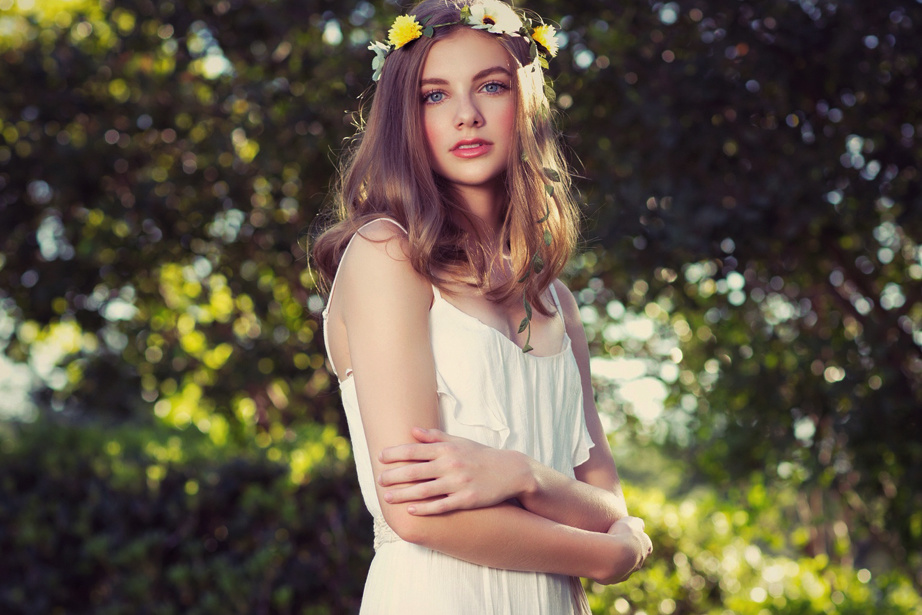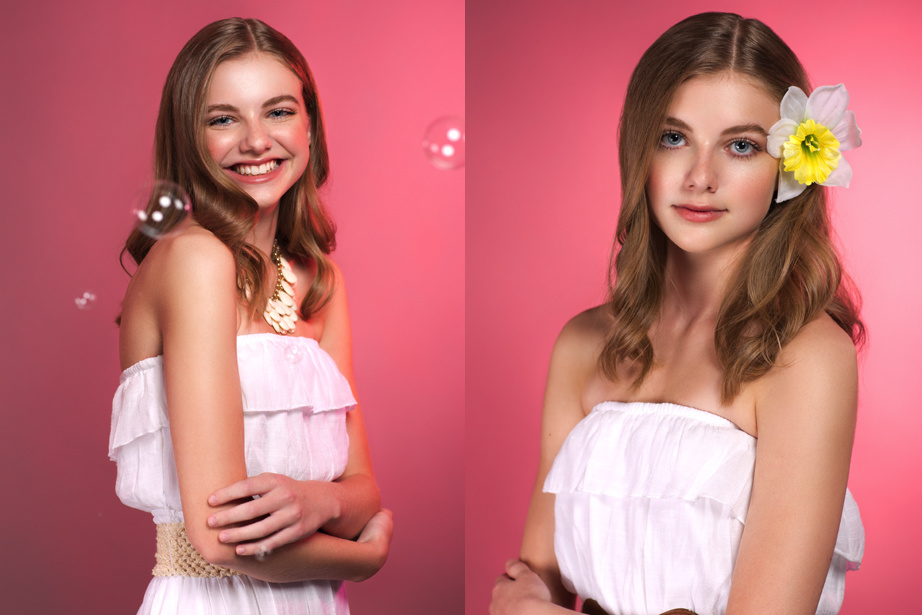For any photographer with ambitions of working in the fashion industry, or for those with a focus on portraiture, there will come a time when you work with a subject that is unfamiliar with being in front of the camera. This can range from a newly signed model at an agency, to a client interested in a corporate headshot. While a photographer’s eye can be their greatest asset, communication skills are just as important. Below we will take a look at some of my top tips for making the most of your next session.
1.) Get to Know Your Subject
Taking a more personal approach to your subject can elevate the overall quality of the images. Try to meet with your client or model prior to the session, or dedicate a small portion of the session to breaking the ice with them. Learning about your subject's interests can make them more comfortable, while giving you the opportunity to examine some of their features. If there are images of your client or model available to you prior to the session, seize that opportunity to make note of their skin texture, facial features, as well as their physique. Lighting setups can vary drastically from person to person, so it’s best to prepare ahead of time for how you will best flatter them.
Communication is key when it comes to interacting with your subject, and building a quick rapport is important in order to solidify that. When working with aspiring models who may not be familiar with posing for the camera, you may often find that they will resort to expressions and poses that mimic what they see in magazines or social media. Emulating these poses may be entirely different than what you want to capture. Being able to converse with them effectively can mean the difference between stiff, mannequin-like expressions and cliché poses, to those that portray genuine emotion and poise.

2.) Visuals Are Your Friend
It is no secret that most people respond well to visual aids. Gathering images that demonstrate the look, style, pose, or expression you want your model to represent will be very helpful to them. Mirroring poses in order to display what you’re aiming for can also be helpful (sometimes amusing), so don’t feel too shy to use yourself for demonstration.
Some photographers will also make use of a large mirror, or tether their camera to a large display so that the model can receive instant feedback and make necessary adjustments. Very few people are immediately aware of their appearance without the help of a reflection, or practice in front of the camera. Whatever you can do to aid in their self-awareness will be to your benefit in the final images.
3.) Articulate What You Want
Be sure that you can clearly communicate what it is you want your model to do. Establish early on how you plan to direct your subject, and exactly what certain phrases translate to.
For example, you may say "look to this side," so the model turns their head toward the gestured direction. While technically correct, what you wanted them to do was glance to your right with their eyes only, and not turn their head. Another example may be when you say "take a step to your left," and your model takes a large step to the left, throwing off the pose you were shooting for. What you truly wanted was for them to just inch slightly over. It's little miscommunications like these that can complicate a photoshoot. Be as specific as you can be to minimize any misunderstandings with your model.
4.) Praise Your Subject
Confidence is often a key piece of presence in a photograph, and more often than not that is what you want to inspire in your model. When a subject feels confident in their performance, they will always deliver photographs with more impact. Praise them repeatedly throughout the shoot, especially when they are doing exactly what you want them to do. Everyone enjoys compliments, and repetitively encouraging your model will not only improve their performance, it will also create a fun working environment.
Just be mindful of how you are complimenting your model, and be sure to keep it professional. Some photographers will say certain phrases that their model finds disrespectful or offensive, so try to avoid any racy comments that may make your model feel ill-at-ease.

5.) Do Not Touch Your Subject
At no time should you touch your subject, as it will likely make them uneasy. If you absolutely have to touch your model, it is paramount that you ask them permission first. Aside from the obvious, another issue with touching your model is the fact that it means you'll have to pull yourself away from the camera to do so. If you have anyone assisting you with the shoot such as a stylist or make-up artist, it would be wise to have them do those adjustments for you. It's common for a stylist or assistant to brush back stray strands of hair, or adjust a crinkled area of a shirt on the model, etc.
As a photographer, think of yourself as the director of the shoot. Directors do not touch the actors, they communicate with them verbally, and rely on their team to fix what minor issues may arise.
6.) Have a Mental Checklist
Ensure that you have captured all of the necessary images for the session. For the agency test you are shooting for a development model, have you captured enough headshots, 3/4 shots, and full-length? For a client sitting for a corporate headshot, have you provided them with a range of options? Did your client have a specific request for a particular accessory or a backdrop they wanted incorporated into the shoot? Was there a variety of poses or angles, or was there too much similarity between the photographs? Keep track of these aspects so that you can please all of those involved, while giving yourself a final opportunity to capture winning images.

7.) Freestyle
In many of my sessions, I dedicate a time where I tell my model to just “freestyle it,” and do whatever it is they wish, without any instruction from me. Often, I will play music that the model enjoys, and capture candid portraits of them dancing, smiling, or just posing in whatever independent ways they wish to. Many of my favorite portraits have come from these freestyle sessions, where I encourage the model to be nothing else but themselves.
What are some of your favorite ways to direct subjects that aren’t necessarily ready for their close-up? Please do share below in the comments!







Great refresher!
Thank you!
People often forget that in order to communicate visually, you need to be able to communicate verbally. I always like to get together (without a camera) with my clients, prior to a portrait session. Then on the day, they know what to expect, and so do I. It's much more relaxed, which shows up in the final images.
Some cool tips that we all should know. Specially when it comes to touching models.
Thank you, Paulo! It's funny how many people miss that part. Personal space is very important to consider, and breaching that can quickly make things awkward.
They do, if i need to touch the model and that's a big IF, i'll ask the makeup artist or, ask her if i can do such thing. Sometimes it's like picking hair or something wrong with the clothes with my fingertips. I avoid it the most i can, unnecessary and can destroy the whole mood of the model.
Great write up!
Thank you!
#kendrarules #anothergoodone #wewantmore #fstopperswriteroftheday
Haha, thank you, Alice! You definitely help to motivate me to keep the quality going!
I'm big on demonstrating poses - once a model realizes they cannot possibly look as ridiculous as I just did things get easier. Also, I tell them I'm checking/adjusting the lighting - this gets people comfortable with shutter clicks and flash pops while they think the images don't count and usually results in a keeper or two.
Great article and very well written. Thanks!!